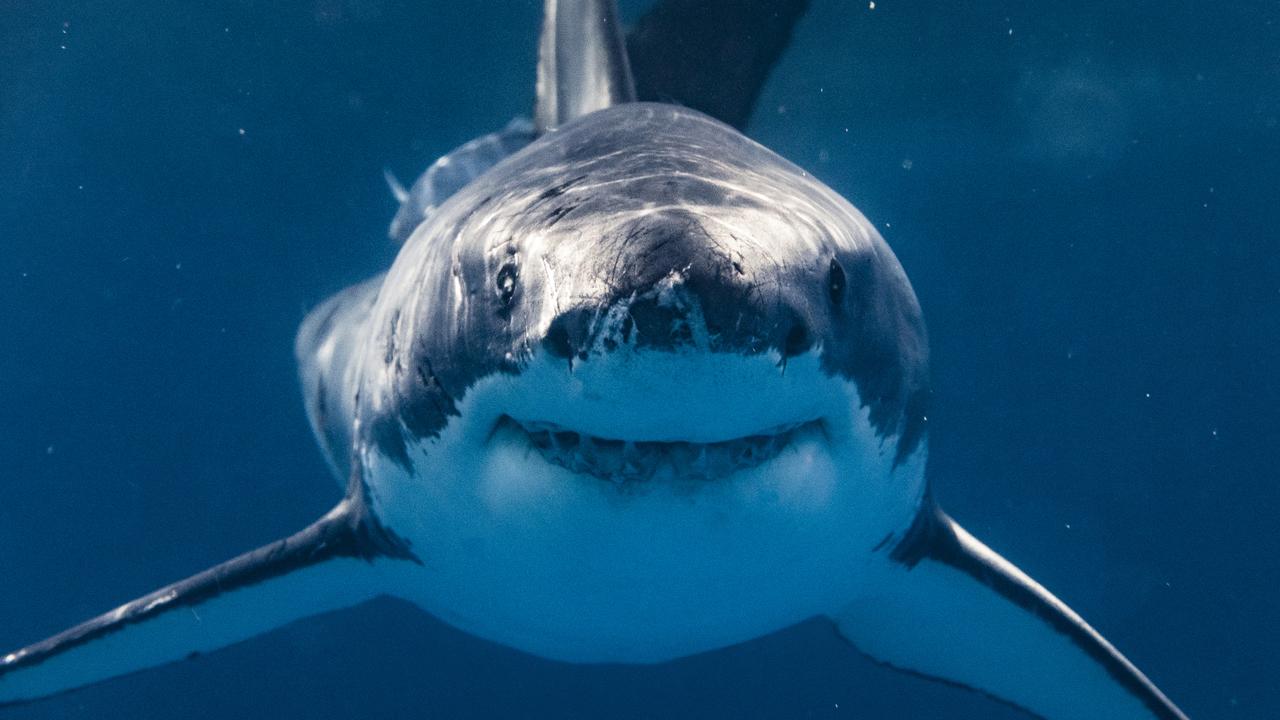Mystery surrounds creature responsible for great white shark death on Australian beach
Marine researchers are trying to solve the mystery of which sea creature was responsible for attacking and killing a huge shark that washed up on an Australian beach

READING LEVEL: GREEN
Marine experts are investigating whether a pod of killer whales killed a half-eaten great white shark which washed ashore in Australia this week.
Residents in Portland on Victoria’s southwest coast discovered the chewed-up carcass* of the great white on the sand at Bridgewater beach on Monday, a day after orcas* were spotted circling in nearby waters.
Local surfer Mark Berry, who stumbled across the dead shark on his way to the surf, said only a whale could make such a large bite.
“It was such a big shark, I doubt anything else would have happened to it,” Mr Berry said.
“It’s quite bizarre. I’ve never seen anything like this before and I’ve been surfing here for 50 years.
“It was a pretty big shark, half of it had been eaten.”

Portland resident Allen McCauley said he watched orcas circling in the area for two and a half hours on Sunday.
“We thought they might have been feeding on some salmon but, after seeing the photo of the shark, we realised what might have happened,” he said.
While locals are convinced orcas preyed* on the great white, marine experts say there are more killer creatures in the sea and don’t want to jump to conclusions*.

David Donnelly, who is a research officer at the Dolphin Research Institute, said in his 20 years of research, he’d never heard of an orca attacking a great white shark.
“We are just looking for those pieces of the puzzle that will let us know that this is a certainty,” said Mr Donnelly.
“There’s more than killer whales in the ocean, there’s a lot of creatures out there.”
Killer whales, which are actually dolphins, are apex predators*, and their diet includes fish, squid, seals, sea birds and whales larger than themselves, according to the Natural History Museum in London. They are the only known predators of great white sharks.
Earlier this year, two killer whales pursued and killed 17 sharks in one day off the coast of South Africa.

Orcas regularly grow between 6-8m and weigh up to 3.6 tonnes, dwarfing* even the largest great whites. Orcas use their size and their intelligence to their advantage. When hunting as a pack, they will distract sharks and then roll them over to make them immobile*.
Once controlled, they cut open the shard to remove its liver and leave it to die. Why the liver? It has valuable nutrients that orcas love and it’s often described as being like a dessert to them.
The only other sea creature capable of killing great white sharks with such a big bite is the
sperm whale, which is the largest toothed predator alive. They are known to prey on the megamouth shark, a shark of similar size to the great white.

Officers from the Victorian Fisheries Authority are now conducting further tests to determine what happened to the Portland shark.
Meanwhile, Mr McCauley said he was not afraid to get back in the water despite knowing the orcas and shark were swimming nearby.
“I swim every morning at Nuns Beach in town and we are still all going in,” he said.
POLL
GLOSSARY
- carcass: the dead body of an animal
- orcas: another name for killer whales
- preyed: caught and killed for food
- conclusions: the end of an event
- apex predators: an animal that naturally hunts down others to eat but has no predators of its own
- dwarfing: cause to seem small in comparison
- immobile: unable to move
EXTRA READING
Tiny sharks attack sailors off Qld
Orca pair kills 17 sharks in one day
Shark cam captures life and death struggles
QUICK QUIZ
1. Why do local residents think killer whales killed the shark?
2. What do killer whales normally eat?
3. What term is used to describe a group of orcas?
4. Which authority is investigating the incident?
5. What size and weight do killer whales grow to?
LISTEN TO THIS STORY
CLASSROOM ACTIVITIES
1. What type of tests?
What types of tests do you think would be done to try to determine what happened to the Portland shark? Write a list and sentences explaining your ideas.
Time: allow at least 15 minutes to complete this activity
Curriculum Links: English, Science
2. Extension
Why do you think sharks sometimes have a reputation for being the most dangerous ocean creatures when they are not safe from predators? Write a paragraph that answers this question.
Time: allow at least 20 minutes to complete this activity
Curriculum Links: English, Science
VCOP ACTIVITY
1. Stretch your sentence
Find an animal in the article. Write it down. Add three adjectives to describe it better.
Now add a verb to your list. What is it doing?
Add an adverb about how it is doing the action.
Using all the words listed, create one descriptive sentence.

